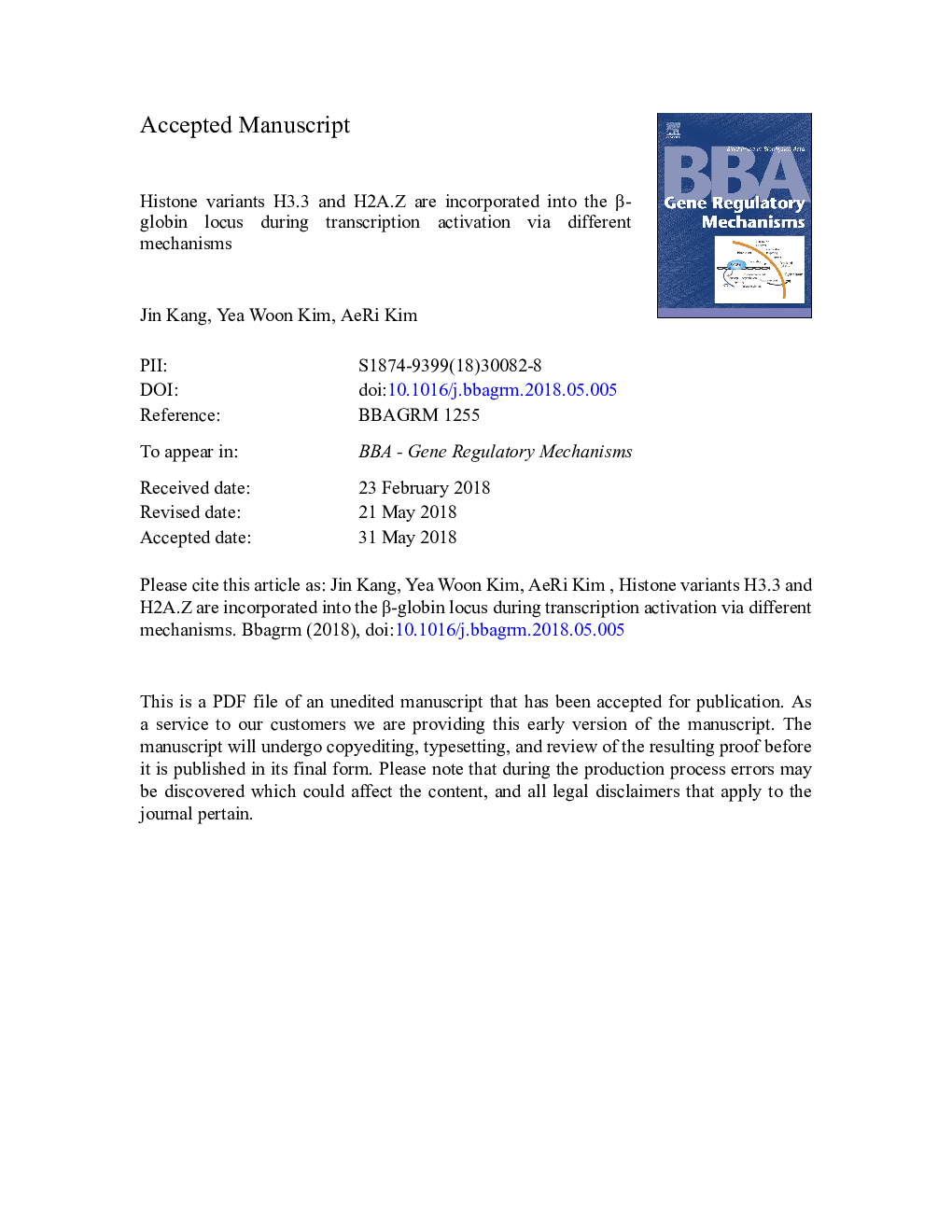| Article ID | Journal | Published Year | Pages | File Type |
|---|---|---|---|---|
| 8300267 | Biochimica et Biophysica Acta (BBA) - Gene Regulatory Mechanisms | 2018 | 28 Pages |
Abstract
Histone variants H3.3 and H2A.Z are often enriched in enhancers and transcriptionally active genes. However, the incorporation dynamics of these variants and the mechanisms of their incorporation are unclear. Here, we examined the distribution of H3.3 and H2A.Z in the human β-globin locus and analyzed their incorporation dynamics during transcription activation. Locus control region hypersensitive sites (LCR HSs), acting as enhancers, and active globin genes were enriched by H3.3 and H2A.Z in erythroid K562 cells, but inactive globin genes were not. Both variants were dynamically incorporated into the β-globin locus after transcription induction in MEL/ch11 cells, and prior to gene transcription the LCR HSs became enriched with the variants. In the activated β-globin gene, H3.3 was highly incorporated during transcription, whereas H2A.Z incorporation appeared to precede it. To further explore the relationship between gene transcription and variant incorporation, we deleted the LCR HS3 enhancer or the β-globin proximal promoter from the β-globin locus using the CRISPR-Cas9 genome editing system. H2A.Z was incorporated into the β-globin gene in the locus lacking promoter, even though the β-globin gene transcription was abolished by these deletions. However, H3.3 incorporation was reduced in the untranscribed β-globin gene. These results suggest that H3.3 and H2A.Z are systematically incorporated into the LCR enhancer and β-globin gene as part of transcription activation, but that their incorporation is carried out via different mechanisms.
Related Topics
Life Sciences
Biochemistry, Genetics and Molecular Biology
Biochemistry
Authors
Jin Kang, Yea Woon Kim, AeRi Kim,
